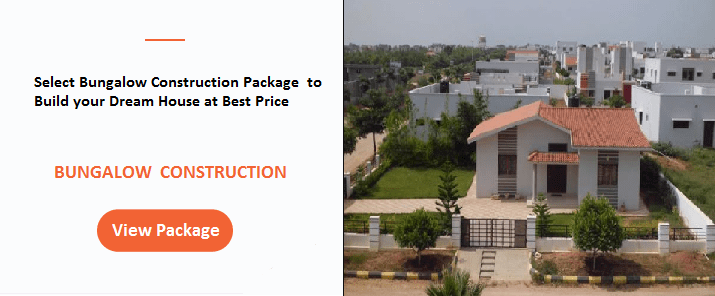Houses are externally and internally plastered to overcome deviation in plumb and line that are inherently occurred due to deviations in RCC and masonry wall, line and level individually. Also, there are numbers of joints in individual masonry courses and between RCC and masonry wall. These joints are prone to rain water ingress. External plaster (Waterproofed) becomes a necessity to give watertight envelope to a building.
External plaster is usually done in double coat as arrived thickness is < 20mm. Internal plaster is usually done in single coat as arrived thickness is 12 – 15 mm. If thickness of plaster is more than 15mm then double coat of internal plaster is recommended.
A wall is plastered to a finish ready to receive paint coats on it. A good plaster surface is necessary for a satisfactory paint finish. Any imperfections in plastered surfaces get reflected after a paint finish which can be an eyesore.
Plaster are basically done using Cement Mortar and/or Gypsum. Here we will discuss in detail the comparison between both these kinds of plaster i.e. Cement Plaster and Gypsum Plaster.
Technical comparison between Cement Plaster and gypsum Plaster
| Parameters | Cement plaster | Gypsum plaster |
|---|---|---|
| Basic Raw Material | · Cement + sand (Site mixed) · Cement + sand (Packaged) | Gypsum powder |
| Manufacturing | Site – Site mixed Factory – Ready Made Packages | Factory made |
| Green Product | NO | YES |
| Application areas | Internal & External | Internal (Non- wet areas, excluding kitchen,bathrooms,balconies etc) |
| Standard packaging size | 40 kg | 25 kg |
| Consumption per (12mm thick plaster) | · For 1: 4, Cement = 39 kg Sand = 4 cft covering 100 sq.ft. area · 40 kg bag – 16 to 18 sq.ft. | 25 kg bag – 18 to 21 sq.ft |
| Compressive strength | 3.5 to 7.5 MPa (depending on ratio) Example: 1:4 – 4 to 5 MPa | 5 – 7 Mpa |
| Minimum coat thickness | > 10 mm Should not be Less than 10 mm | < 6 mm Should Be building more than 6mm or else will peel off |
| Finish |
|
Smooth finish and Ready to receive paint built up |
| Curing | Wet curing for 07 days | Air curing for 24 hrs. |
| Disadvantage | Prone to plastic/drying shrinkage cracks | Need to avoid prolong dampness |
| Recommendations | External plaster All wet internal areas (kitchen, Toilet & Terraces/Balcony). | Internal walls and ceiling (Non wet area) |
| Cost Per 100 Sq ft | Rs. 2,000/- Rs. 2600/-, If POP punning is done to prepare a smooth surface | Rs. 2,300/- |






